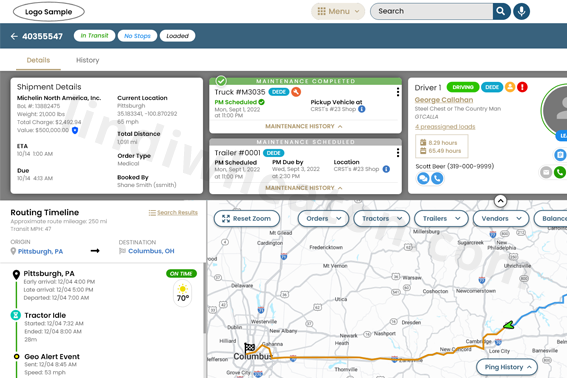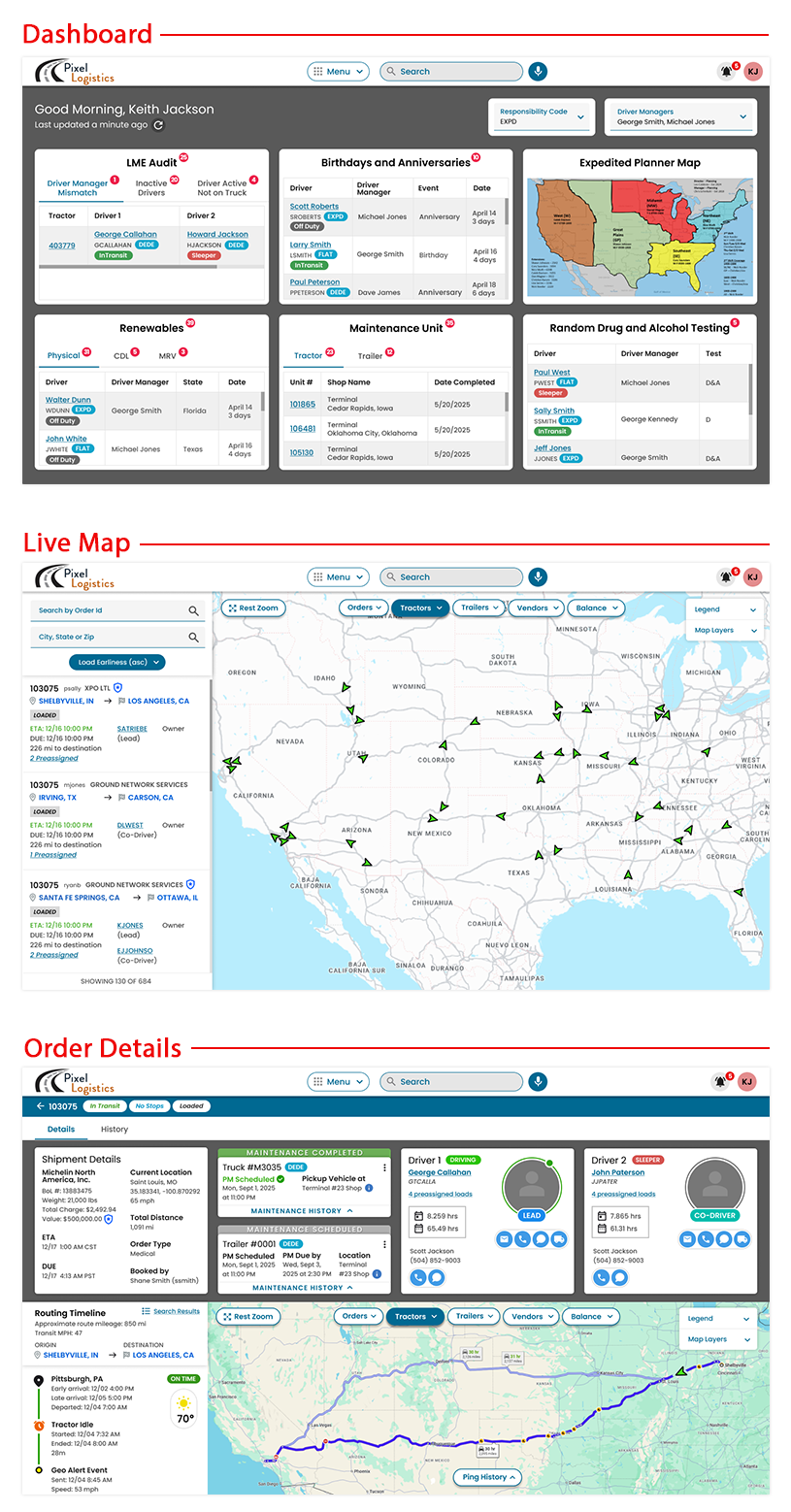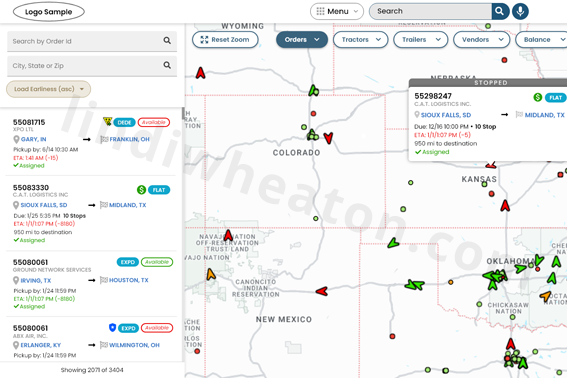Dispatch Software
Live Map: Features & Design
The Live Map integrates the Google Maps API to deliver real-time visibility into freight, drivers, and equipment across the U.S. Designed for dispatchers and operations teams, it provides a centralized view of critical logistics activity. This solution played a key role in streamlining dispatch operations and enhancing collaboration across departments, while leveraging the power and reliability of the Google Maps API.

Order & Route Details: Features and Designs
The Order Details view consolidates all essential shipment information into a single, intuitive interface. Designed to support dispatchers, safety teams, and customer service, it provides full visibility into each load from pickup to delivery. This centralized view ensures operational accuracy, enhances communication across departments, and helps teams proactively manage exceptions or delays.






